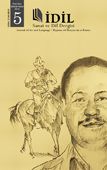ON YEDİNCİ YÜZYIL OSMANLI MİNYATÜRLERİNDE SIRA DIŞI BİR EĞİLİM: MÜSTEHCENLİK
AN EXTRAORDINARY TREND ON THE 17TH CENTURY OTTOMAN MINIATURES: SUGGESTIVENESS
Author(s): Ahmet DalkıranSubject(s): Visual Arts, Aesthetics, 17th Century, The Ottoman Empire
Published by: Sanat ve Dil Araştırmaları Enstitüsü
Keywords: Miniature; Ottoman Miniature Art; Portrayal; Suggestiveness;
Summary/Abstract: The basis of traditional Turkish painting is Miniature (Picture for books). The first representatives are the Uighur Turks. In Anatolia, after 11th century, it developed under the protection of first Seljuk Emirs, then Ottoman Sultans. Miniature showed an outstanding development in the Ottoman Period, especially starting from the period when Sultan Mehmet the Conqueror was on throne to the end of the 16th century. However, with the Empire’s beginning to weaken, a significant fall in the production of the manuscript works was experienced in the beginnings of the 17th century. This situation addressed miniature to different fields such as “murakka” (album) and different kinds of subjects which had not been covered previously and belonged to the people’s daily life; such as special events which have suggestive effects, leisure, domestic and street life in 17th century. Miniature’s, an art of palace, starting to cover daily life scenes which is an extraordinary subject, is significant for both providing information about public’s culture, sexual life and sense of aesthetic, and showing managers of period’s point of view to the art of painting in the 17th century.
Journal: İdil Sanat ve Dil Dergisi
- Issue Year: 1/2012
- Issue No: 05
- Page Range: 112-131
- Page Count: 20
- Language: Turkish

